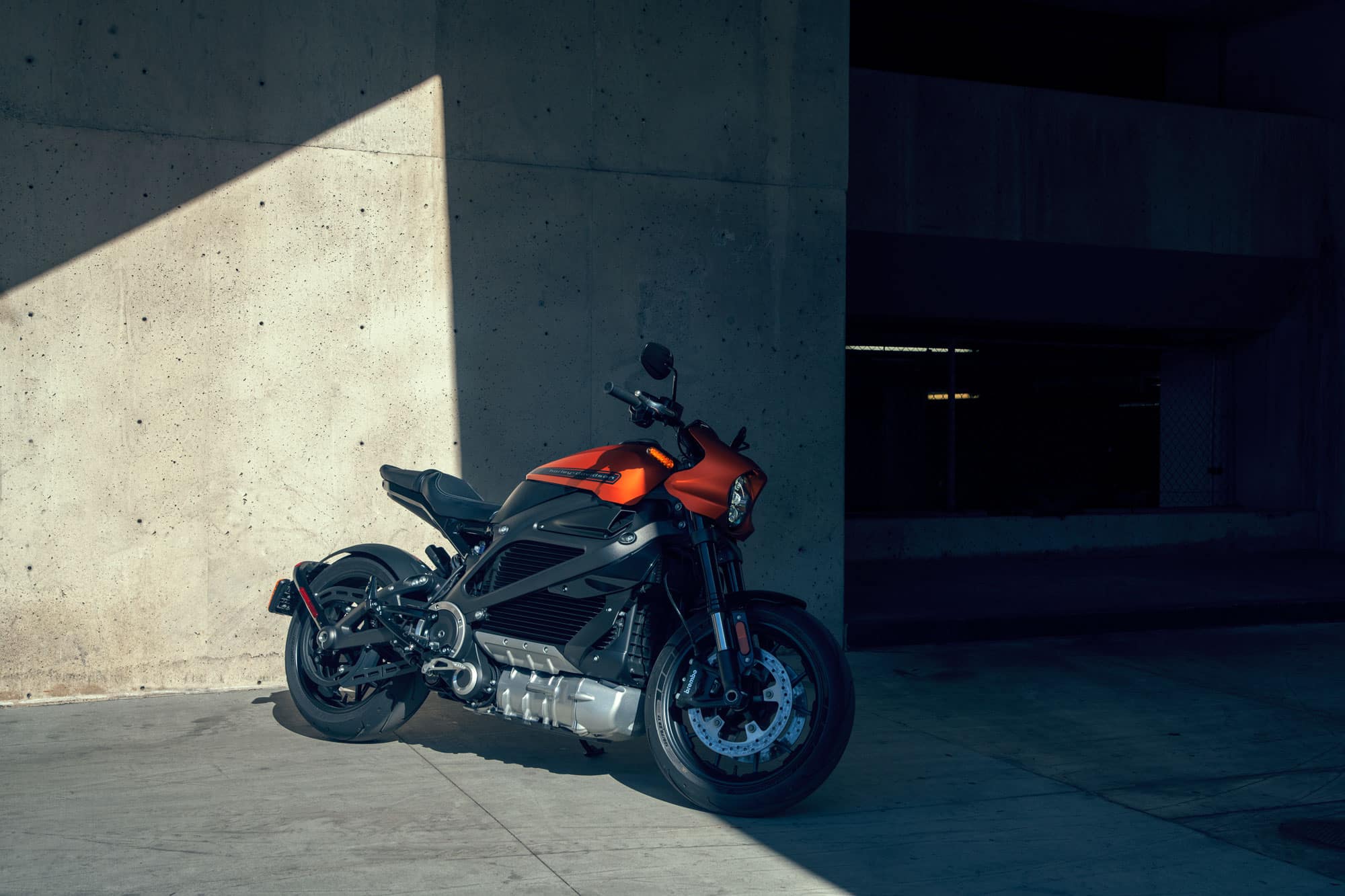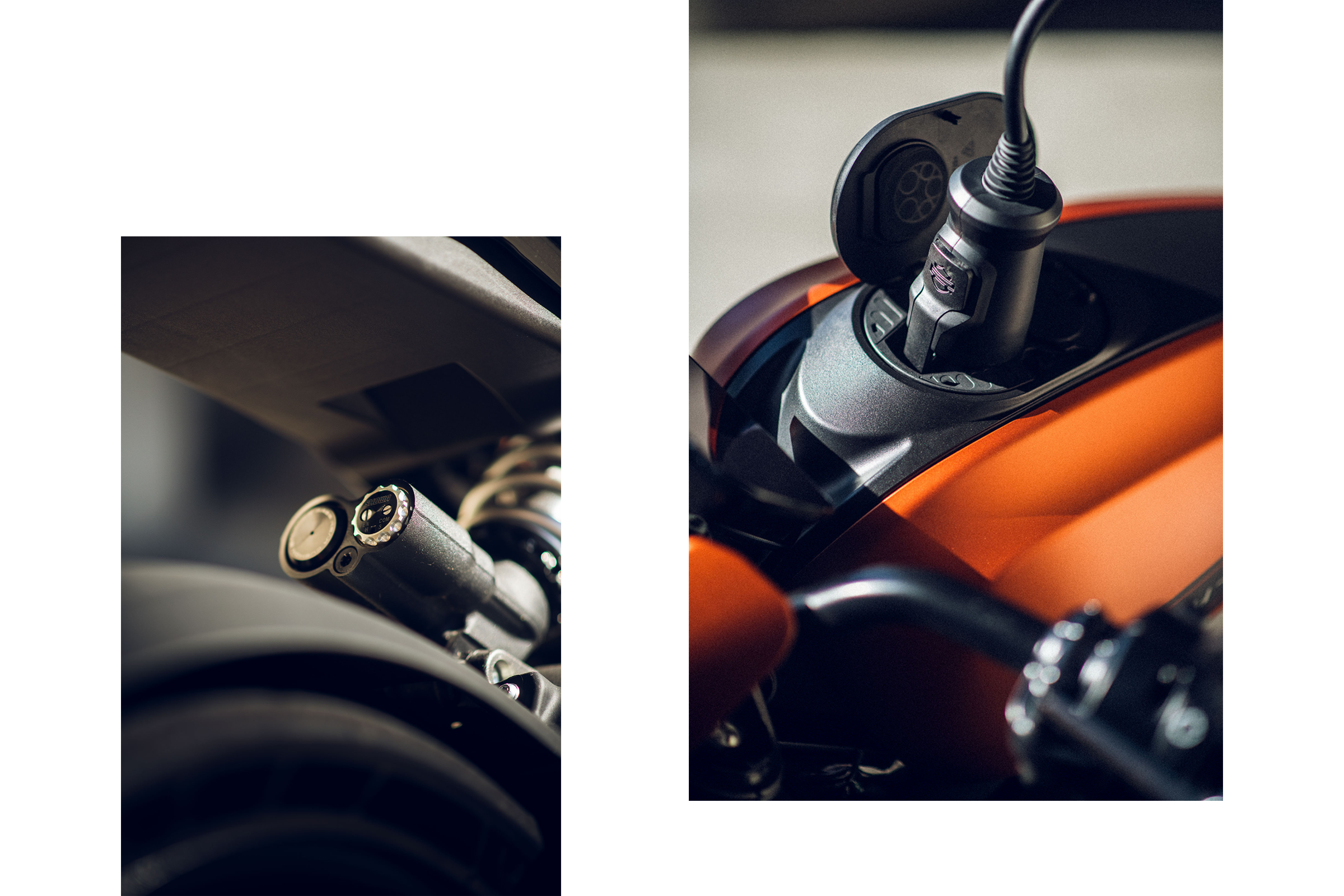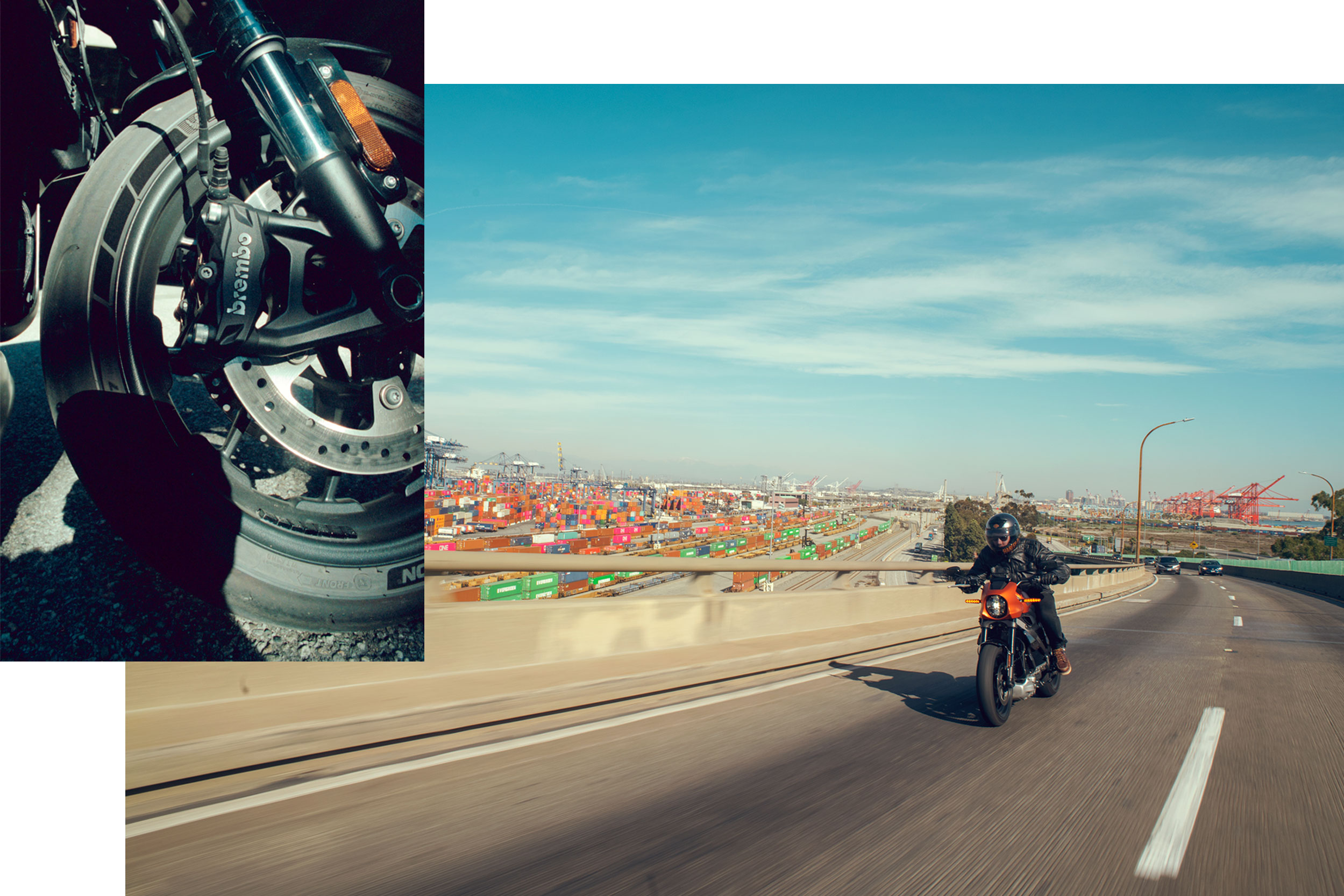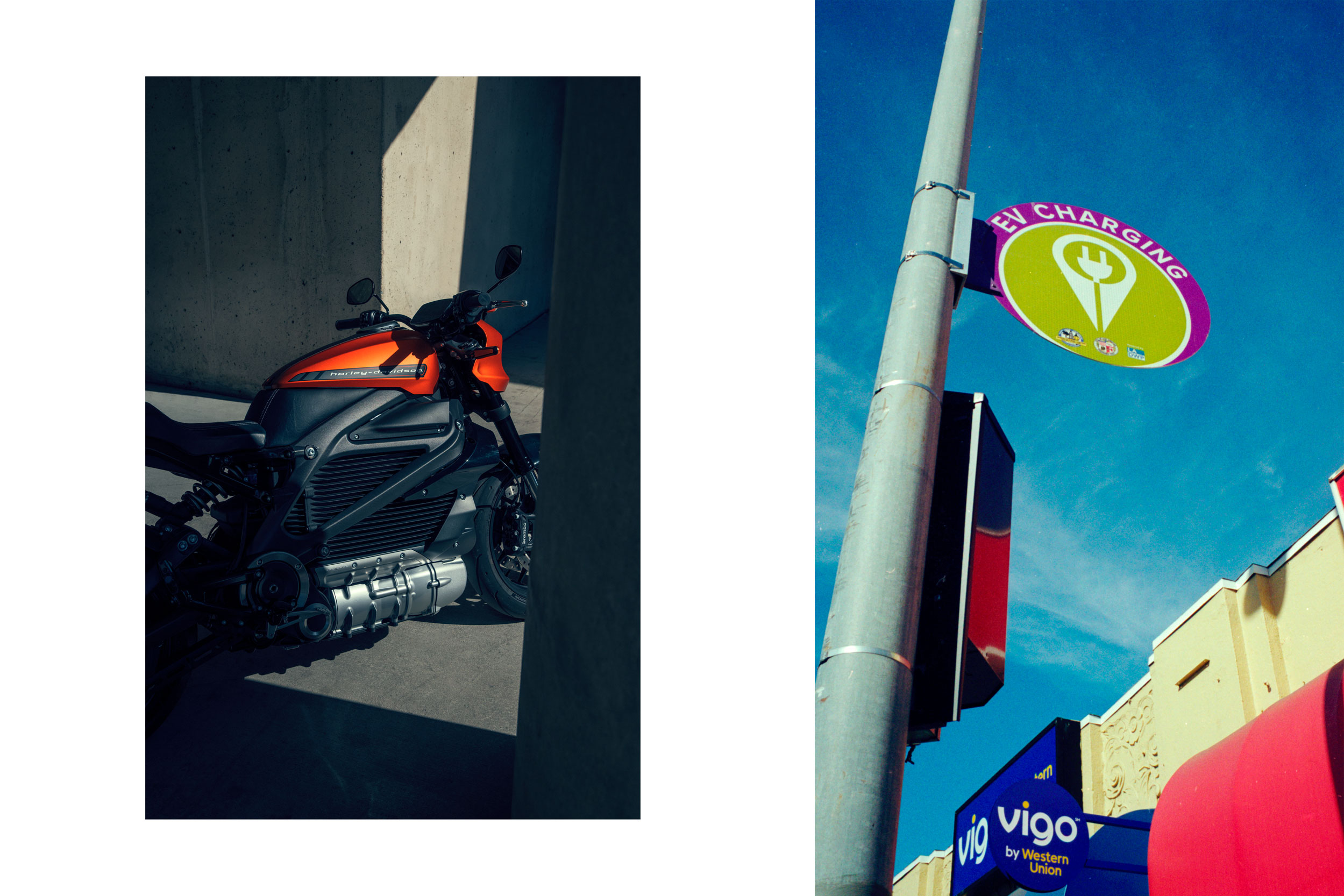LET’S DO SOMETHING we’d all love to right about now—jump five years into the future. It’s now 2025.
There’s been five years of aggressive—and I mean tear the thing down and rebuild it aggressive—innovation in the world of cars, trucks, and motorcycles. Some well-known manufacturers, Harley-Davidson among them, and some surprising manufacturers are changing how we drive and ride.
Most notably the auto industry has blown through $225 billion electrifying its fleets. Half of all auto sales from the big players like Toyota and Volvo are now electric.
Volkswagen has made well over 1 million electric vehicles, most of Cadillac’s lineup is now electric, and every Ford now comes in an electric version. What some said were optimistic projections five years ago have now become a reality.
It turns out electric vehicles were not a fad. While the world is not (yet) racing to deliver flying jetpacks, there is a scramble to make smart batteries.
In this projection, California alone has nearly 250,000 DC fast chargers serving up battery-friendly DC electricity (versus the AC electricity we use at home). This means vehicles no longer need to carry pesky built-in converters and can fill up in a fraction of the time.
Charging stations have become so economical and so easy to install they outnumber traditional gas filling stations 25 to 1.
But in other areas, the change has been less pronounced. Range—how many miles you can travel on a fully charged battery—has grown. Vehicles now easily match the mileage of traditional ICE (internal combustion engine, or vehicles that use gas) vehicles. But drivers want more.
Despite the environmental, cost, and maintenance benefits of electric vehicles (EVs for short), drivers are really never satisfied. They’re always hungry, especially for one thing in particular. What is it that they continue to crave?
Speed.
Behind the Curtain
Research and development of Livewire
In 2010, fresh out of Milwaukee Institute of Art & Design, 22-year-old Ben McGinley landed his first full-time job. He’d studied as an industrial designer and focused his projects on motorcycles hoping to build a portfolio that would stand out from his classmates.
His idea worked; he was hired as an industrial design contractor by Harley-Davidson and given a one-year contract. “I knew I would be working on motorcycles, but I didn’t know what I would be working on,” he says.
On his first day he was shown how to enter the ultra-secretive Product Development Center in Wauwatosa, Wisconsin, a non-descript building with a hidden test track in the back. He found his workstation and took a seat.
“One of the engineers brought in a third scale 3D printed mockup. It was a battery back and two wheels. He set it on my desk and said, ‘Here’s what you’re working on.’” Ben, another designer, a manager, and six engineers were tasked with creating Harley-Davidson’s first electric motorcycle, and whether they knew it or not, changing the future of how we ride.
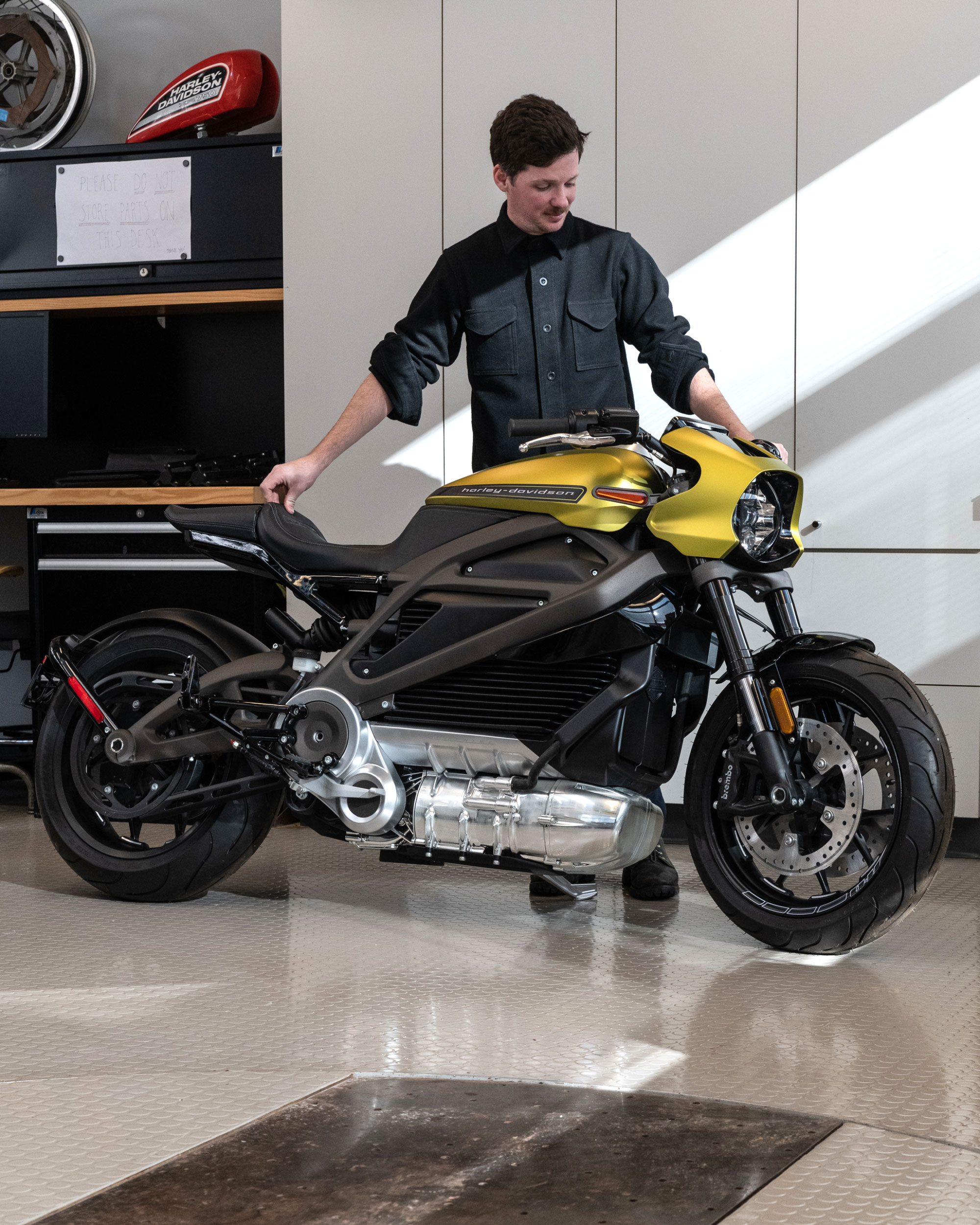
When Ben McGinley was first hired as an industrial design contractor by Harley-Davidson, he was given a one-year contract. Little did he know then he’d go on to develop the company’s first electric motorcycle. Photo by Chris Force
Harley-Davidson employs about 600 engineers, a portion of them roped off into what they call Advanced Engineering. They’re an “upstream design team” tasked with engineering new ideas. They did a few CAD drawings showing a battery floating between two wheels and kicked it to Ben to sort out.
“There was a general skeleton, but what we were tasked to do was figure out how to make it look good and make it a Harley-Davidson. At that point it was totally just to try it out, with no intention of producing it. We had a budget to make some running vehicles, so we needed to figure out what they would look like. It wasn’t a sure thing that we would actually produce it,” says Ben.
Ben dove into the prototype with everything he had. He’d never worked as a full-time designer before, and now he was creating designs directly for Willie G. Davidson, the head of the department, legendary designer, and grandson of the company’s founder.
Learning as fast as he could, Ben researched custom bikes, supercars, fighter jets, and anything that could help shape his vision of how to design a motorcycle without a V-twin engine in the middle of it. He would make sketches and take them straight to Willie.
“We did a lot of stuff he didn’t like. He would usually tell us to keep it simple. We did a lot of stuff that was really crazy and complicated and he would try to ground it in something more iconic and understandable. There is a balance. It needs to be electric, but you can’t put people off,” Ben says.
Ben sketched like mad, eliminating away the majority of what he made. When he had an idea he liked he would sculpt it in clay. He spent so much time in the shop that management eventually asked him to stop working so much as he was still an hourly contractor. “The design process was super exciting for me.”
They eventually landed on a design and toward the end of 2010 built two running motorcycles they wheeled out to the test track and took quick laps in the Wisconsin snow. “It’s such a different experience. I have a hard time describing it. It went from an interesting thing to be working on to having full faith in it as a successful, marketable vehicle,” remembers Ben.
The bike was such a hit that management wanted 30 or 40 more to get global feedback. Ben transitioned into what would become Project LiveWire, building off the prototypes and making a bike that could undergo wider testing. By 2014 a small fleet of Project LiveWire bikes, completed with a 53-mile range, hit the road for testing all over the world.
Enter LiveWire.
Initial feedback was fantastic but not without criticisms—namely the 53-mile range. So management gave the green light to a production version, code name Amp, with a directive to hit a 100-mile range. Ben now had a new challenge.
“With EVs everything comes from the battery out,” Ben explains. “If you change a little thing in there it has a big ripple through the whole bike. We doubled the energy of the bike, but that drove a lot of design change. Plus we wanted to make sure it had enough of a visual update so you could recognize it as a new bike; it couldn’t just be internal changes.”
The rest of the design needed to get ready for production. “We wanted specific colors for LiveWire that you couldn’t get on any other products. We wanted it to be unique,” says Brad Richards, vice president of styling and design. After hours of debate, they landed on a distinctive Orange Fuse, Yellow Fuse, and black.
“Getting the paint right was a massive collaboration. We did a whole bunch of samples. Hierarchy in finishes is really important. We wanted to make sure the motor is the first thing you see; that’s why the motor is so bright. Then we wanted the frame to be not so in your face. It started off silver but ended up in a bronze color that has a technical look that doesn’t stand out so much,” says Ben.
The original bike called for a tail section in matching paint that would eliminate the ability to ride with a passenger. “It would have been a little sexier, but the product planning side thought we would lose customers,” Brad says.
The team meticulously went over every last detail. They understood they were launching a halo vehicle that would chart a new course for the 116-year-old company. No detail was too small to debate. “Even warning stickers are a lot harder than you think. We tried them all over the place,” Ben says.
- We experienced well over 100 miles range of mixed highway and city riding and recharged the bike in under an hour with the DC Fast charger. Photo by Matthew Jones for Sixtysix magazine
Engineering went into overdrive and the range was increased to 146 city miles. The new motor, freshly named Revelation, could now kick out 105 horsepower and 86 ft-lbs of torque. The team designed LiveWire around the powertrain similar to how Harley-Davidson approaches all of its motorcycle designs—with the motor as the “crown jewel.” It’s a significant hallmark to the company’s designs, and a unique approach for EV.
The design team dialed in every last detail, down to working with Michelin to spec the perfect sidewall graphics for the tires.
Ben and the team also had the opportunity to design the battery pack. “No one hands us a battery pack that we have to build a motorcycle around. The whole bike is the battery pack; it’s the core of everything. If you couldn’t affect that it would be really difficult to make a successful design,” he says.
Then it was finished. Finally, in late 2019, Harley-Davidson launched the all-new LiveWire—the company’s first ever electric motorcycle.
On the Road
with the Harley-Davidson LiveWire
In early 2020 I headed out to LA for my first ride on LiveWire. Before throwing a leg over I got some early feedback from Matt Laidlaw, a third generation Harley-Davidson dealer who was one of the first dealers to ride the bike.
“It’s a bike that you ride to go fast, have great handling properties, and everything you could really want out of a performance-based bike,” Matt says. “They went all-in with things like suspension and state-of-the-art electronics.”
Having ridden Project LiveWire in 2014, I had some baseline for what to expect.
My expectations were wrong. LiveWire is an all-new motorcycle, with a completely different ride.
- Harley-Davidson included many signature touches to connect the rider emotionally to LiveWire, including Haptic feedback, also known as the “heartbeat.” Photo by Matthew Jones for Sixtysix magazine
The first thing I was curious about was the sound. When I rode the bike over to Roborace headquaraters to show it off to designer Daniel Simon, it was the first thing he asked, too—how’s it sound?
Harley-Davidson expected this. During design the team experimented with different sound configurations, at one point trying to mimic the “potato-potato” rumble a traditional V-Twin engine makes. “It was bad; we didn’t do that,” Ben laughs. “The sounds are all made by the actual powertrain.”
There is a distinctive sound, a futuristic-whirl, but the bike is very, very quiet.
- The TFT dash, intuitive controls, easy to navigate ride modes, sporty tires, comfortable sport-touring riding position, and fancy suspension and braking technology makes LiveWire easy to ride and fiercely capable. Photo by Matthew Jones for Sixtysix magazine
As I hit my first on-ramp, Matt’s words rattled around in my helmet, reminding me, or maybe warning me, “You have that instant torque, right at the first twist of the throttle.”
And this, the instant torque, proved to be the most amazing thing about the ride. The bike is blazing fast. No clutch. No shifting. Just twist and fly.
The more I rode, the more I realized how much Harley-Davidson designed to let a rider focus on the ride. The TFT dash, intuitive controls, easy to navigate ride modes, sporty tires, comfortable sport-touring riding position, tapered tank you can squeeze in the corners, and fancy suspension and braking technology makes LiveWire both easy to ride and fiercely capable.
The Electric Mindset
Getting in the zone with EVs
Two things change for a rider when you go electric. The first thing is you let go of shifting. It’s nothing shy of awkward at first, but shocking how quickly you completely forget about it.
On both twisty mountain roads and in stop-and-go downtown LA traffic not having to shift brings a powerful ease to the rider. It’s one less thing you think about, freeing up a lot of mental energy I never realized I was using on an ICE bike.
It’s hard to overstate just how freeing it is to not shift, or how much fun it is to have such tremendous speed available in such a manageable package. It’s a blast.
- Harley-Davidson’s design team experimented with different sound configurations. Ultimately the sounds are all made by the actual powertrain, and LiveWire has a distinctive, futuristic sound but is very, very quiet. Photo by Matthew Jones for Sixtysix magazine
The second thing that changes is the concern over range anxiety. In my experience, all of the claimed stats proved to be true. I got well over 100 miles range of mixed highway and city riding and recharged the bike in under an hour with the DC Fast charger. Easy.
Range anxiety is nothing new to Alissa Kendall, professor of civil and environmental engineering at UC Davis studies. She studies electric vehicles and trends, and she also predicts range anxiety will soon be a thing of the past. She knows advancements in high-capacity, high-performance lithium-ion batteries that last longer—say 12 to 15 years—are right around the corner. “Drivers will have a lot more confidence about the long-term performance in the near future,” she says.
- Before launching LiveWire, the design team meticulously went over every last detail. They understood they were launching a halo vehicle that would chart a new course for the 116-year-old company. Photo by Matthew Jones for Sixtysix magazine
Defining the Future
How electric vehicles are set to take over the road
When Ben was hired, at first as a contractor back in 2009, I’m not sure anyone in the building knew what he was shaping.
Under that roof you had Willie G. Davidson, a motorcycle legend in his 80s and creator of the Low Rider, one of the most important motorcycles of all time.
And then you had young Ben, who his colleagues joke still gets asked for his ID when buying beer.
But it’s very possible Ben and his team’s work will leave just as an important mark on the company’s legacy as Willie’s did. As Matt points out, “Harley-Davidson is the premiere American motorcycle in the world. The fact that they’re the first major manufacturer to move into the EV space is a huge statement.”
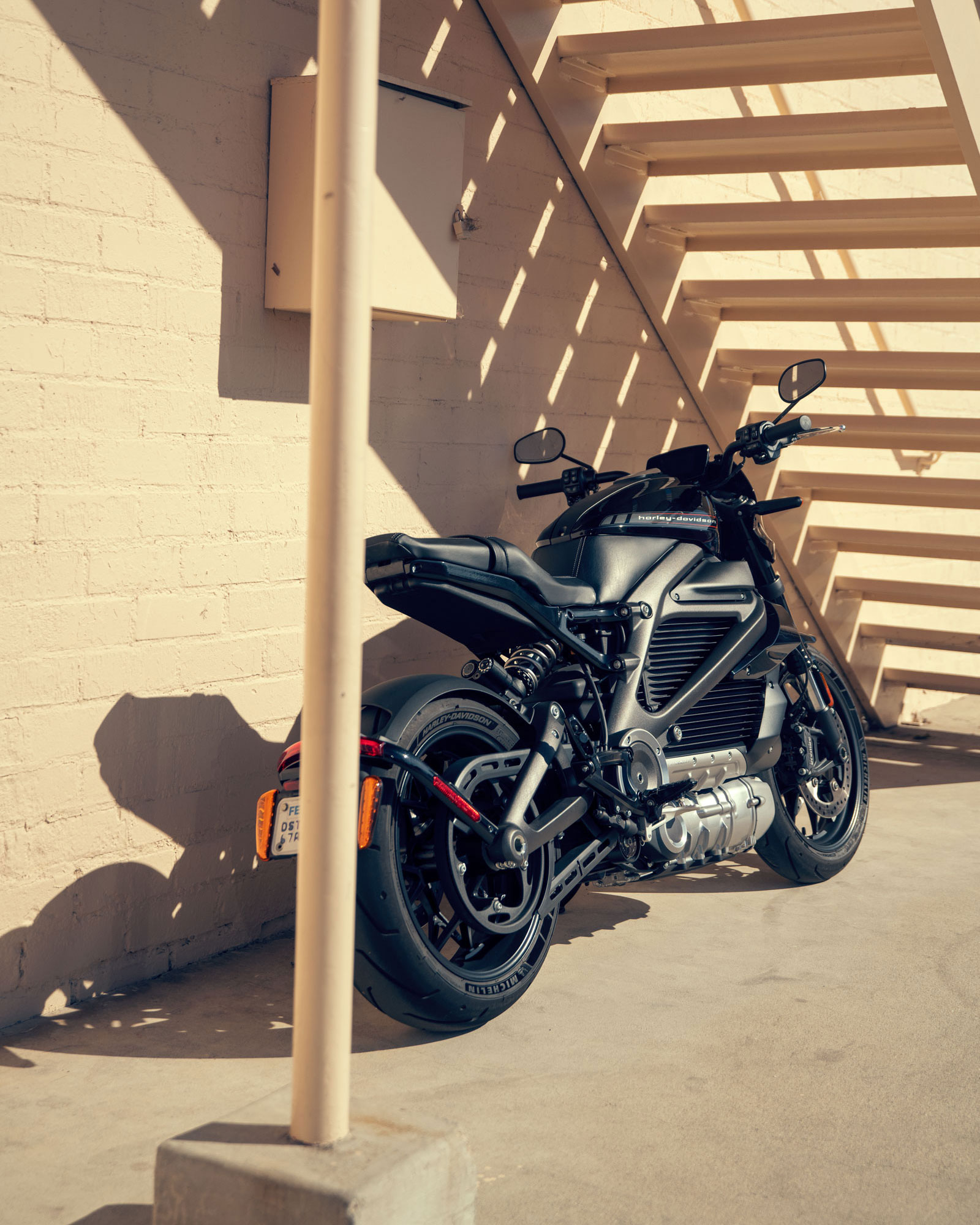
Harley-Davidson eliminated range anxiety when the engineering team went into overdrive and the range was increased to 146 city miles. Photo by Chris Force
No doubt, what we are witnessing is the beginning of a big movement. Wayne Killen, who works for Electrify America, is, well, attempting to electrify America. “It’s all going to change in the next few years,” he says.
Wayne is on a mission. Previously in charge of new products at Audi, he helped bring the electric Audi E-Tron to market. He was bit by the EV bug hard, promising to build, more than 3,000 individual chargers by the end of 2021. “Once you get hooked by the EV bug, it’s hard to go back.”
“It’s going to take a little bit of time for folks to understand that a company like Harley-Davidson is now stepping into the modern age with a transformative EV bike. It’s going to do a lot of great things for the company,” he says. “The fact that they included charging for free in the motorcycle is a big step forward,” he adds referencing the two years of free charging owners receive.
In some ways it’s easy to see LiveWire as just another motorcycle, it’s got two wheels and a handlebar. But LiveWire isn’t just a motorcycle; it’s a physical representation of how Harley-Davidson envisions the future. And this, laying out your hopes and dreams for the future for all to see (and ride), is what makes this bike so special. Harley-Davidson is looking to transform what the idea of a motorcycle is, who it’s for, and what you can do with it.
